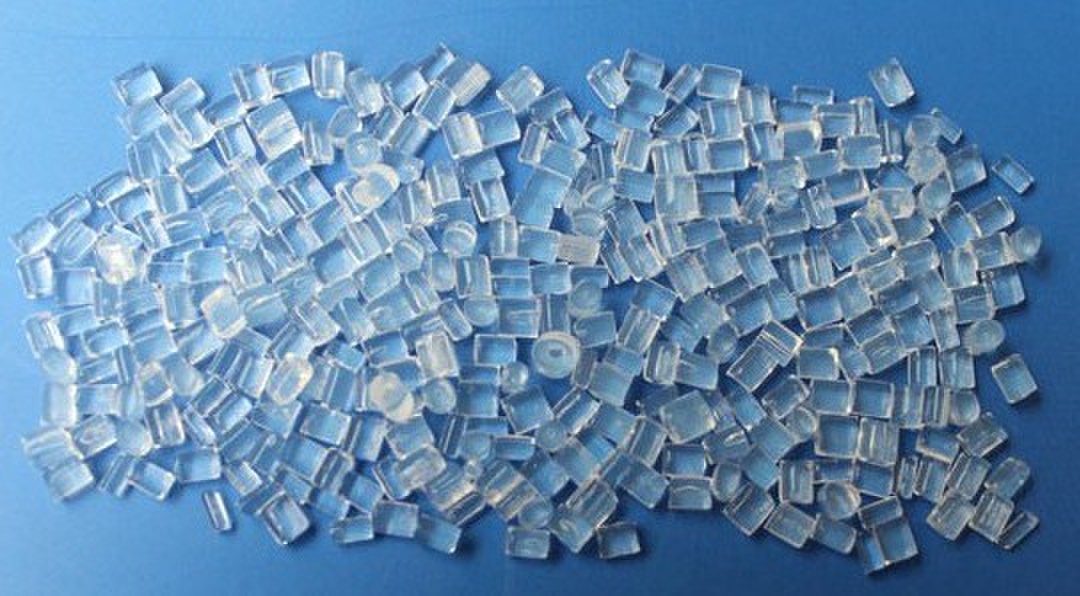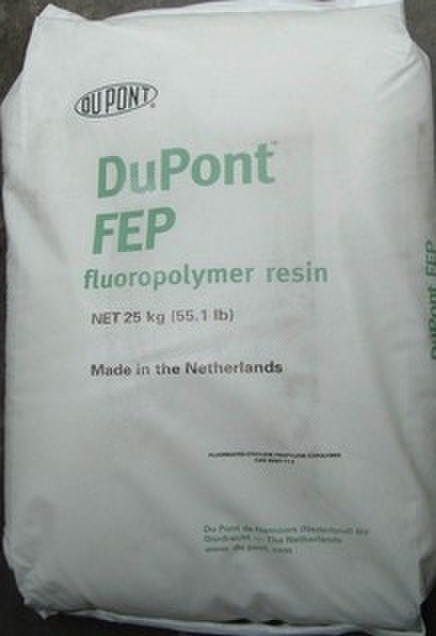
DuPont™ Teflon® FEP 100
Moulding and Extrusion Resin
Resin Characteristics
General purpose resin with a medium melt flow rate.
Applications
Wire and cable insulation, small tubing and injection molded parts.
Product Information
For inventory control purposes product name may be followed by an X.
Products labeled FEP 100 and FEP 100 X are equivalent and all information in this document is applicable to both.
Typical Application
Wire and cable insulation, small tubing and injection molded parts.
Description
DuPont Teflon® FEP 100 is a melt-processible copolymer of tetrafluoroethylene and hexafluoropropylene without additives that meets the requirements of ASTM D 2116 type I.
It offers the excellent combination of properties characteristic of Teflon® fluoroplastic resins: non-ageing characteristics, chemical inertness, exceptional dielectric properties, heat resistance, toughness and flexibility, low coefficient of friction, non-stick characteristics, negligible moisture absorption, low flammability, performance at temperature extremes and excellent weather resistance.
Teflon® FEP 100 is a general purpose grade and is used in many different applications. It can be melt-extruded and is used for wire coating as primary insulation and, in certain cases, for cable jacketing. Cables insulated with Teflon® FEP 100 have met the requirements of Underwriters’s Laboratory UL910 Steiner Tunnel tests for installation in plenums without metal conduits.
Stress-crack resistance is an important element in establishing end-use performance. Extensive testing of wire and cable constructions is needed for definitive performance evaluation.
Experience shows that the MIT folding endurance or flex life test, performed on a thin film of resin, has established a good correlation with extensive cable testing. The higher the MIT flex life, the higher the stress-crack resistance of the resin. MIT test results should be viewed as a guide to comparative performance of the various grades of resin. We recommend that for applications involving repeated thermal and flex cycling, specific tests on the final cable always should be undertaken. See also DuPont’s bulletin “Grade selector for Wire and Cable applications”.
Processing
Teflon® FEP 100 fluoroplastic resin can be processed by conventional melt extrusion and by injection, compression, and blow molding processes. For smooth feeding to extrusion equipment it is supplied in 3 mm (0.12”) pellets. The extruders and molding machines used for Teflon® FEP 100 should be constructed of high nickel alloy corrosion-resistant materials and be capable of operating at temperatures up to 400℃ (750℉).
Safety Precautions
Industrial experience has proven that adequate ventilation, in properly maintained processing and handling areas, will eliminate known hazards to personnel. Resin containers should be opened and used in well-ventilated areas.
Equipment used to process at melt temperatures should be provided with local exhaust ventilation to completely remove all fumes and vapours from the processing area. In addition, care should be exercised to avoid the contamination of cigarettes and other forms of smoking tobacco when using fluoroplastic resins. Before processing any fluoroplastics, read the Material Safety Data Sheet.
Food Contact Compliance
Properly processed products made from Teflon® FEP 100 resin can qualify for use in contact with food in compliance with FDA 21 CFR 177.1550 and European Regulation (EU) No 10/2011. For details and information, please contact your DuPont representative.
Storage and Handling
The properties of Teflon® FEP 100 resins are not affected by storage time. Ambient storage conditions should be designed to avoid airborne contamination and water condensation on the resin when opening and emptying the packaging.
Packaging
Teflon® FEP 100 is packaged in 25 kg, single layer, plastic bags. For convenient shipment, orders of 1000 kg pallets are recommended.
| Typical Property Data for Teflon® FEP 100 |
| Property |
Test method1) |
Unit |
Typical value |
| Processing |
|
| Melt Flow Rate(MFR,at 372℃/5.0 kg) |
ISO 12086 |
D 2116 |
g/10 min |
6.8 |
| Specific Gravity |
ISO 1183 |
D 792 |
|
2.14 |
| Critical shear rate(372℃/702℉)) |
|
DuPont |
1/s |
22 |
| Guide DDR range for cable extrusion |
|
|
|
60-120 |
| Mechanical |
|
| Tensile strength,23℃(74℉) |
ISO 12086 |
D 638 |
MPa(psi) |
35(3770) |
| Elongation,23℃(74℉) |
ISO 12086 |
D 638 |
% |
300 |
| Hardness,Shore Durometer |
ISO 868 |
D 2240 |
|
D 56 |
| Impact Strength,Notched Izod,23℃(74℉) |
ISO 180 |
D 256 |
kJ/m2 |
No Break |
| MIT Folding Endurance(0.20 mm,8 mils film) |
|
D 21765) |
cycles |
10 000 |
| Electrical |
|
| Relative Permittivity,at 1 kHz |
IEC 250 |
D 150 |
|
2.03 |
| Relative Permittivity,at 1 GHz |
IEC 250 |
D 150 |
|
2.03 |
| Dissipation Factor,tgδ,at 1 kHz |
IEC 250 |
D 150 |
|
0.00007 |
| Dissipation Factor,tgδ,at 1 GHz |
IEC 250 |
D 150 |
|
0.001 |
| Dielectric Strength,short time |
IEC 243 |
D 149 |
|
|
| 0.25 mm film |
|
|
kV/mm |
>80 |
| Thermal |
|
| Melting point |
|
D 4591/D 3418 |
℃(℉) |
350(500) |
| Continuous Service Temperature2) |
|
- |
℃ |
205(400) |
| Flammability classification3)4) |
|
UL 94 |
|
V-0 |
| Limiting Oxygen Index |
ISO 4589 |
D 2863 |
% |
>95 |
| Other |
|
| Chemical resistance |
|
D 543 |
|
Excellent |
| Water absorption,24h |
|
D 570 |
% |
<0.01 |
| Weather Resistance |
|
|
|
Excellent |
Note: Teflon® FEP 100 meets the requirements of ASTM D 2116-07(2012), type I Typical properties are not suitable for specification purposes.
1) ASTM method unless otherwise specified
2) Definition of continuous service temperature: The continuous service temperature is based on accelerated heat-aging tests, and represents the temperature at which tensile strength and ultimate elongation retains 50% of the original values, after 20 000 h thermal aging. When considering the use of Teflon® FEP at elevated temperatures especially in combination with mechanical, electrical or chemical exposure, preliminary testing should be done to verify suitability.
3) These results are based on laboratory tests, under controlled conditions, and do not reflect performance under actual fire conditions.
4) Current rating is a typical theoretical value
5) Historical standard

